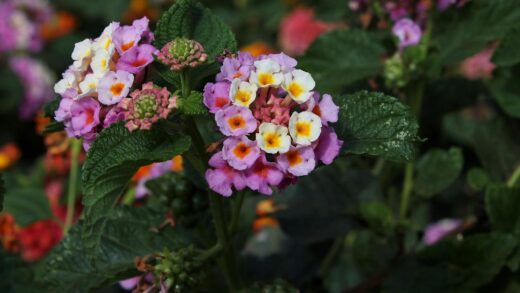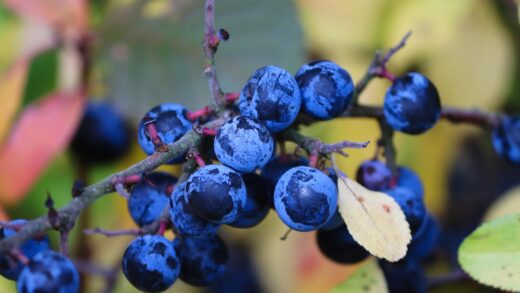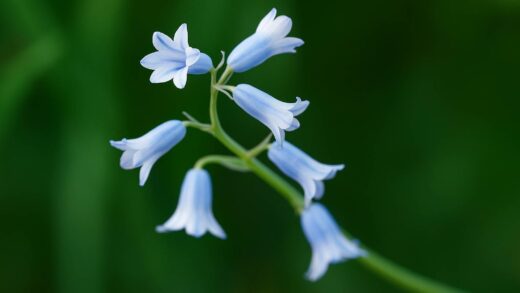Successfully establishing Hosta ventricosa in the garden begins with proper planting techniques and an understanding of its reproductive capabilities. The process of planting is more than simply placing the plant in the ground; it involves careful site selection, meticulous soil preparation, and precise placement to ensure the plant’s roots can quickly anchor themselves and begin to draw nutrients and water. Similarly, propagation is a rewarding endeavor that allows gardeners to multiply their stock, creating new plants to expand their collection or share with others. For the ovate-leaved hosta, the primary methods of propagation are division, which is the most common and reliable, and growing from seed, a more patient pursuit that can yield interesting results. Mastering these fundamental skills is key to cultivating a thriving and expanding community of this elegant shade-loving perennial.
The initial planting phase sets the stage for the entire life of the hosta. The ideal time for planting is during the spring or early autumn, as these seasons provide the moderate temperatures and consistent moisture that facilitate root establishment without the stress of extreme summer heat or winter cold. When a new plant is acquired, whether it is a bare-root specimen or a container-grown plant, it should be hydrated well before being introduced to its new home. The chosen location should offer protection from harsh afternoon sun and be prepared with nutrient-rich, well-draining soil, ensuring the plant has the best possible start in its new environment.
Propagation through division is the most practical method for gardeners wanting to create more Hosta ventricosa plants that are genetically identical to the parent. This process not only increases the number of plants but also serves to rejuvenate older, overcrowded clumps, which may start to show diminished vigor or dead centers over time. The division is best performed in the spring as the new shoots are just emerging, or in the late summer after the flowering period has concluded. The procedure involves lifting the entire clump and carefully separating it into smaller sections, each with a healthy portion of roots and at least one developing shoot, or “eye.”
Growing Hosta ventricosa from seed presents a different kind of horticultural adventure. Unlike division, which produces clones, propagation from seed can result in variations among the offspring, as this species is known for its apomictic reproduction, where seeds are produced without fertilization, but genetic variations can still occur. The seeds should be harvested once the pods have turned brown and dry, and they require a period of cold stratification to break dormancy. This method demands more time and patience, as the seedlings will take several years to mature into a substantial plant, but it offers a unique opportunity to observe the plant’s life cycle from its very beginning.
Ultimately, both planting and propagation are acts of forward-looking garden stewardship. Proper planting ensures the immediate health and long-term success of an individual specimen, allowing it to grow into the lush, architectural clump it is meant to be. Propagation, on the other hand, is a gesture of abundance, a way to perpetuate the beauty of a favored plant throughout the garden and beyond. Both practices deepen the gardener’s connection to the plant, transforming a simple act of cultivation into a dynamic and ongoing relationship with the natural world.
More articles on this topic
The best time for planting
Timing is a critical factor in the successful establishment of Hosta ventricosa. The two most favorable windows for planting are in the early spring and the early autumn. Spring planting is often preferred as it aligns with the plant’s natural cycle of vigorous growth. By planting just as the new shoots, known as pips, are emerging, the hosta has the entire growing season to develop a strong root system before the onset of winter. This timing allows the plant to acclimate and build the energy reserves needed to survive its first period of dormancy in its new location.
Early autumn also presents an excellent opportunity for planting. The soil is still warm from the summer months, which encourages rapid root growth, while the cooler air temperatures reduce the stress on the plant’s foliage. Planting at least four to six weeks before the first hard frost is expected gives the hosta sufficient time to establish itself. The primary advantage of autumn planting is that the plant can focus all its energy on root development, as it is not simultaneously trying to produce and support a full set of leaves and flowers. This often results in a more robust and vigorous plant the following spring.
Planting in the middle of summer is generally discouraged. The combination of high temperatures and intense sunlight puts a great deal of stress on a newly transplanted hosta. During this time, the plant’s water requirements are at their peak, and a compromised root system will struggle to absorb enough moisture to support the large leaves, often leading to wilting, scorching, and a general failure to thrive. If summer planting is unavoidable, it is crucial to provide ample and consistent water and to create temporary shade to protect the plant from the harshest sun until it shows signs of new growth.
Regardless of the chosen season, the weather conditions on the day of planting can also make a difference. An overcast, cool day is ideal as it minimizes transplant shock and reduces the immediate water demands on the plant. Planting during the heat of a sunny day should be avoided. Following the planting, consistent moisture is key, regardless of the season. The soil should be kept moist but not waterlogged for the first few weeks to ensure the roots can grow out into the surrounding soil and firmly anchor the plant in its new home.
More articles on this topic
Step-by-step planting guide
The process of planting Hosta ventricosa is straightforward, but attention to detail will pay dividends in the plant’s future health. The first step is to prepare the planting hole, which should be significantly larger than the root ball of the plant. A general rule is to dig a hole that is at least twice as wide and just as deep as the container or root mass. This wide hole allows you to backfill with amended soil, giving the new roots a loose and nutrient-rich environment to expand into, rather than struggling against compacted garden soil.
Before placing the plant in the hole, it is essential to prepare the root system. If the hosta is from a container, gently remove it and inspect the roots. If they are tightly wound or circling the bottom of the pot, a condition known as being root-bound, carefully tease them apart with your fingers or make a few shallow vertical cuts with a sharp knife. This encourages the roots to grow outward into the new soil instead of continuing to circle in their old shape. For bare-root hostas, soak the roots in water for about 30 minutes before planting to ensure they are well-hydrated.
Proper planting depth is crucial for the long-term health of the hosta. The plant should be situated in the hole so that the crown, which is the point where the leaves meet the roots, is level with or just slightly above the surrounding soil surface. Planting too deeply can bury the crown, leading to crown rot, a fatal condition for hostas. Conversely, planting too high can expose the roots, causing them to dry out. After placing the plant in the hole at the correct depth, begin backfilling with the amended soil, gently firming it around the roots to eliminate any large air pockets.
The final step after backfilling the hole is to water the newly planted hosta thoroughly. This is not just to provide moisture but also to help settle the soil around the roots, ensuring good contact. Apply water slowly and deeply until the entire root zone is saturated. Following this initial soaking, it is beneficial to apply a two- to three-inch layer of organic mulch, such as shredded bark or compost, around the base of the plant. Be careful not to pile the mulch directly against the crown, as this can trap moisture and lead to rot. The mulch will help conserve soil moisture, regulate soil temperature, and suppress weeds as the plant establishes itself.
The process of division
Division is the most reliable and common method for propagating Hosta ventricosa, and it is a simple process that even novice gardeners can undertake with confidence. The ideal time to divide hostas is in the early spring, just as the pointed shoots are beginning to emerge from the soil. At this stage, the leaves have not yet unfurled, making the plant easier to handle and reducing the risk of foliage damage. Dividing in the spring also gives the newly separated plants a full growing season to recover and establish themselves before winter. An alternative window is in the late summer or early autumn, after flowering has finished.
The first step is to carefully lift the entire parent clump out of the ground. Begin by digging around the perimeter of the plant, about six inches out from the edge of the foliage, to avoid damaging the crown. Use a sharp spade or garden fork to get underneath the root ball and gently pry it from the soil. Once the clump is lifted, shake or wash off the excess soil so that you can clearly see the crown and the root structure. This will allow you to identify the individual growing points, or “eyes,” and make clean divisions.
With the crown exposed, you can decide how to separate the plant. For smaller clumps, it may be possible to gently pull the sections apart by hand. For larger, more established clumps, a sharp, sterilized knife, spade, or even a small handsaw will be necessary to cut through the dense crown. The goal is to create divisions that each have at least one, and preferably two to three, healthy eyes along with a substantial portion of the root system. Ensure that each section has a good balance of both crown and roots to support its growth as a new, independent plant.
Once the divisions have been made, they should be replanted as soon as possible to prevent the roots from drying out. Plant them at the same depth they were previously growing, following the same planting guidelines as for a new nursery plant. Water the new divisions thoroughly after planting and keep the soil consistently moist for the next several weeks as they establish new roots. It is normal for newly divided plants to show slower growth in their first year, as they are investing significant energy into developing their root systems. By the second year, they should be well-established and exhibit the vigorous growth characteristic of the species.
Propagating from seed
Propagating Hosta ventricosa from seed is a fascinating process, though it requires significantly more patience than division. Unlike many hosta species that produce sterile seeds, Hosta ventricosa is known for producing viable seeds through a process called apomixis, meaning the seeds develop without fertilization and will generally grow true to the parent plant. The first step is to collect the seeds. This should be done in late summer or autumn after the flowers have faded and the seed pods have formed, ripened, and started to turn brown and dry.
Once the pods are dry, they can be crushed to release the small, black, winged seeds inside. To ensure germination, these seeds must undergo a period of cold, moist stratification, which mimics the natural winter conditions they would experience outdoors. One common method is to place the seeds in a small plastic bag with a handful of moist, but not wet, seed-starting mix or vermiculite. Seal the bag and place it in the refrigerator for a period of four to six weeks. This cold treatment breaks the seed’s dormancy and signals that it is time to grow.
After the stratification period, the seeds are ready to be sown. Prepare a clean seed tray or small pots filled with a sterile, fine-textured seed-starting medium. Lightly press the seeds onto the surface of the mix and then cover them with a very thin layer of soil or vermiculite, as they require some light to germinate. Moisten the medium gently with a fine spray of water and cover the container with a clear plastic dome or plastic wrap to maintain high humidity. Place the tray in a warm location with bright, indirect light.
Germination can be expected within two to four weeks. During this time, it is crucial to keep the growing medium consistently moist. Once the seedlings have emerged and developed their first true leaves, the plastic cover can be removed to improve air circulation. The seedlings are slow-growing and will need to be carefully nurtured indoors or in a protected cold frame for their first year. They can be transplanted into individual pots as they grow larger and finally moved to their permanent garden location in their second spring, after all danger of frost has passed.


















